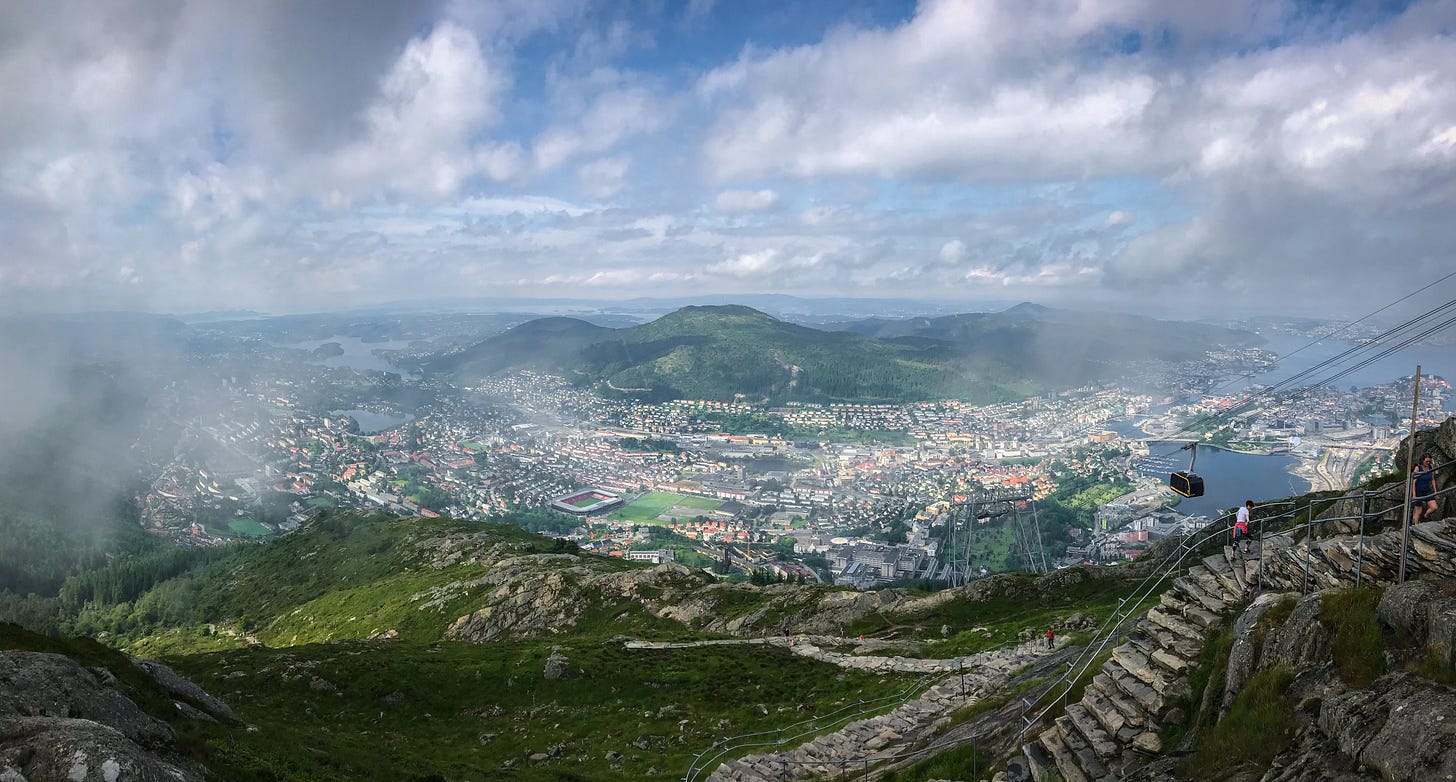Spring in Scandinavia Part 1: Norway
Out on a Trip, Never Sour
It’s officially autumn in my southern hemisphere home of Queensland which means, naturally, that spring has sprung way back up north. Plants are budding, bugs and birds are back in business, and while the weather here cools (though still stays easily in the twenties), the sun rises higher and warms the northern hemisphere more every day. For me, these shoulder seasons of spring and autumn each come with their own sense of irresistible nostalgia, and this year it has me thinking of one place in particular more than any other. Scandinavia.
It was written on pretty much everything I could see in the little shop at the top of Fløyen, a small mountain near the centre of Bergen. Ut på tur, aldri sur. “Out on a trip, never sour”, it means literally. It sounds much better in a songlike Norwegian accent, but the sentiment I have found to be utterly universal, and one that comes almost too easily in Scandinavia.
There’s nothing brash about Scandinavia. Even its major cities - of which I have visited Copenhagen, Oslo and Gothenburg (Göteborg), three of the four largest in the region - maintain an air of calm at almost all times. The bike-laden centre of Copenhagen, slow trams of Gothenburg, and the pedestrian waterfront of Oslo are all filled with a bizarre but not disconcerting quiet. It’s something I’m not quite used to in the rest of the world, especially the large country and state capitals like London, Hanoi, Berlin and Brisbane. This calm, this quiet, this peace, then, only continues to deepen as the cities are left behind and Scandinavia truly comes into its own with its nature.
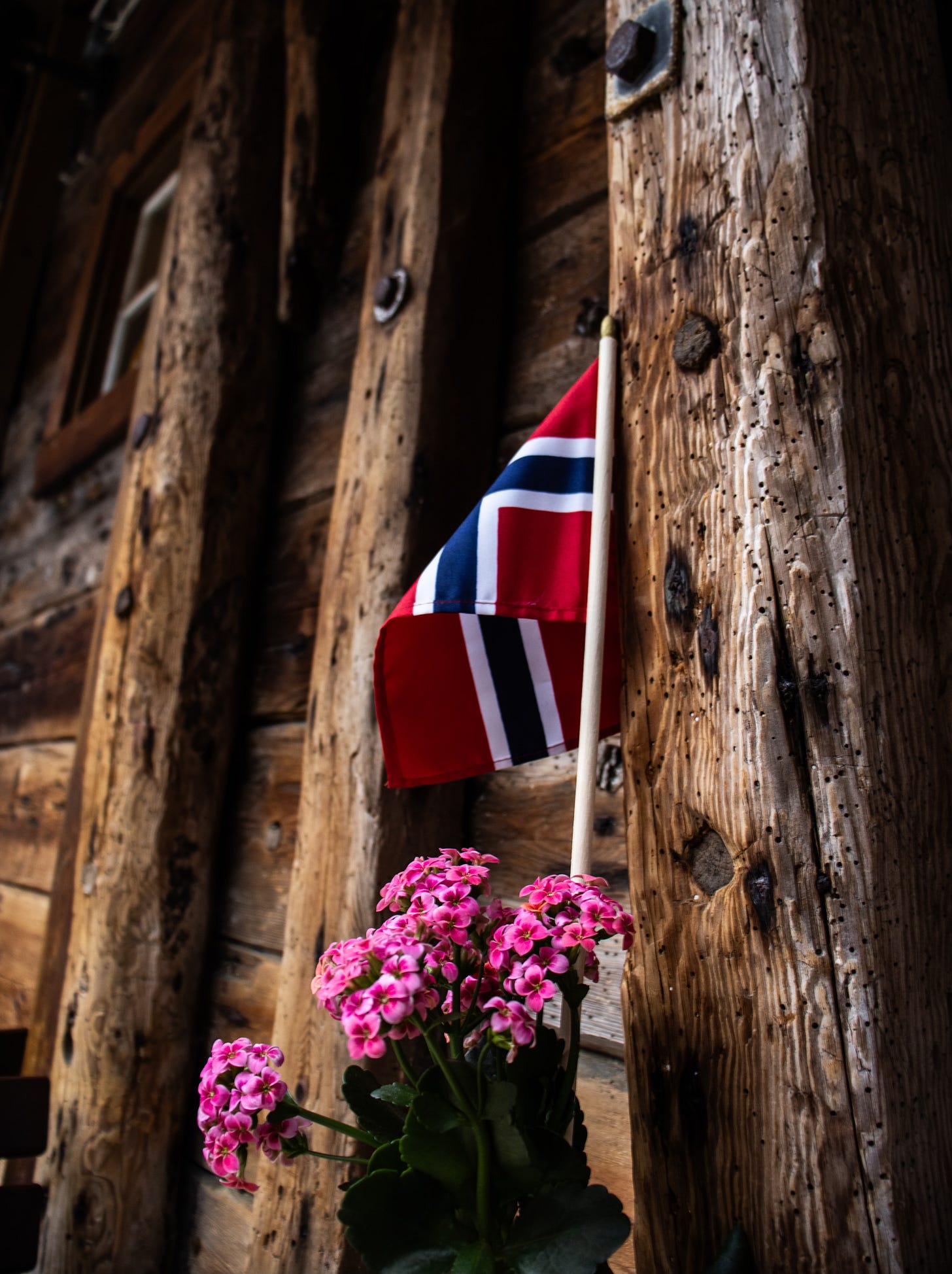
Each time I have visited this unique corner of Europe I have made the choice to visit in the spring, avoiding the harshness of a Scandi winter and the expense of a Euro summer (though expense is never hard to find in the Nordics). Each time I have been rewarded.
My first arrival on Scandinavian soil was just outside the city of Sandefjord. It isn’t a place many would have on their bucket list I’m sure. Nor would I expect many to have even heard of it unless, like me, you played a little too much FIFA growing up. Still, despite recognising the name thanks to its whale tail football badge, I arrived in Sandejford by accident and with only minor resentment of Ryanair advertising it as “Oslo Torp” airport. In reality Oslo is three counties and more than 100 kilometres away. I’d aimed for Leeds and landed in Liverpool. Alas, minor inconvenience resolved by a free bus transfer to a tiny single-track train station, and scintillating Norwegian engineering soon had me floating through outrageously pretty countryside towards the capital.
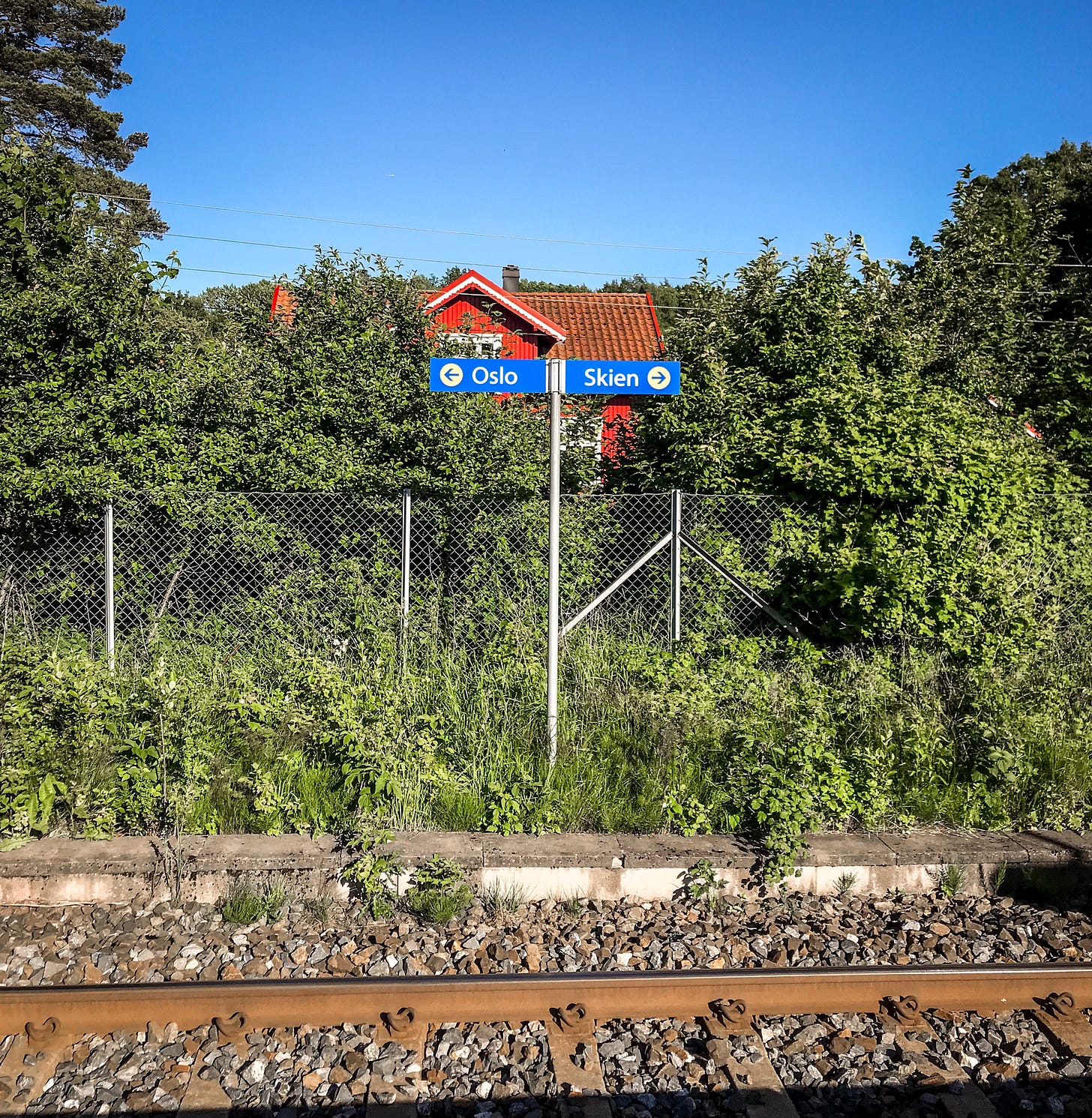
“It’s like the Deep South,” posed a fellow traveller as I shamelessly eavesdropped. He was right. I was annoyed I hadn’t thought of the comparison first. All around were rolling, evening-lit fields in green and gold, and bright red barns surrounded by spring crops. There were few roads and fewer people. Outside the train window the counties of Vestfold, Buskerud and Akershus were drinking in balmy t-shirt weather temperatures. If the conductor had called me “Sugar” instead of “Sir” I wouldn’t have batted an eyelid. Flat, warm and sunny were probably the antithesis to my expectation of Norway. It wasn’t to last.
Norway’s capital was more than a little disappointing. Nothing of its own cause I must add but rather the disappointment created by the Utopian expectations I had of a great Scandi city. And, in the end, its fairly generic European cityscape left me a little bereft for the hopes of my trip. So, when I crossed the country westwards and the days grew drizzlier and greyer and the mountains grew tall and gold farmland turned to green forest, I could feel my whole body reenergising at the thought and sight of wild Norway.
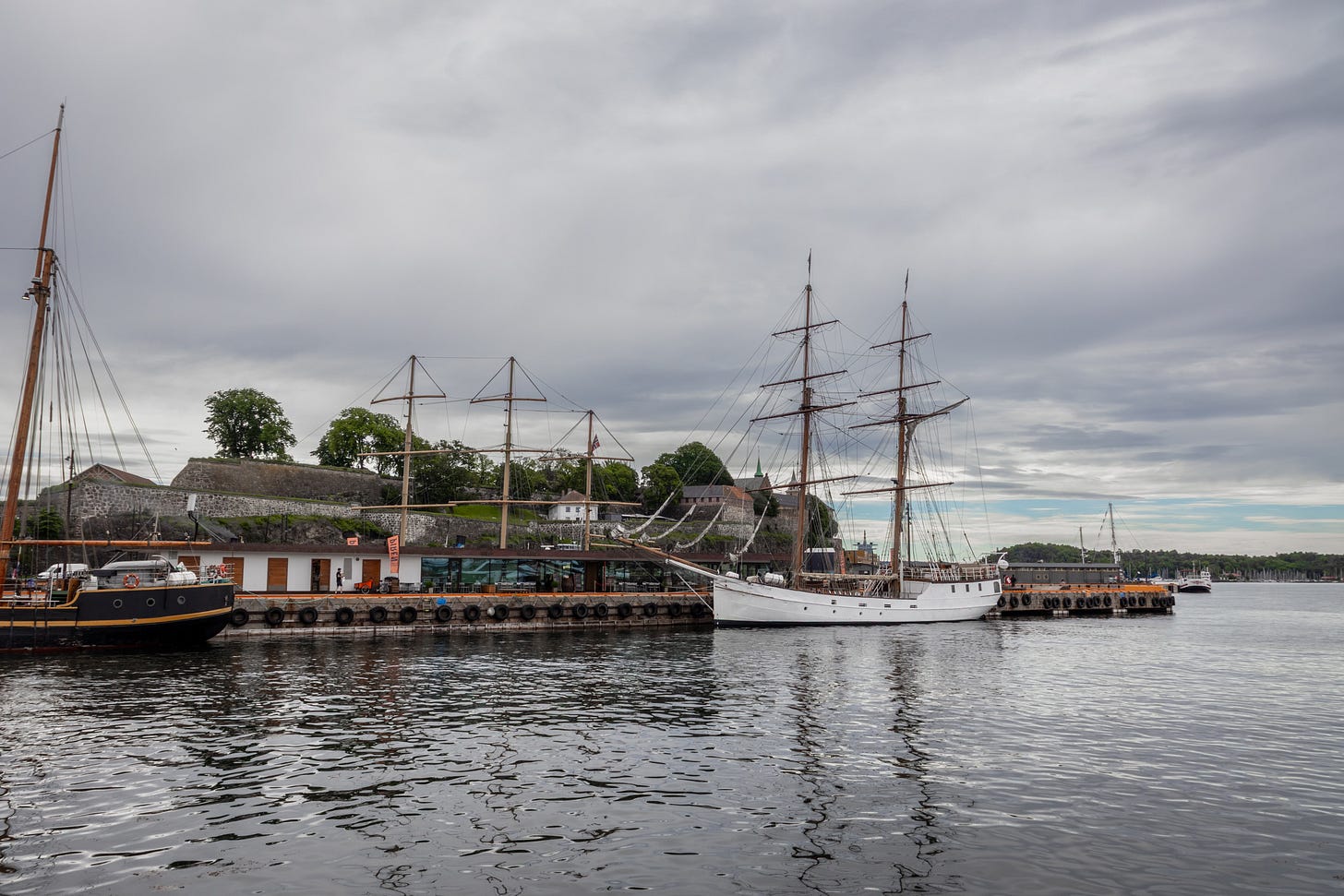
After viewing the spectacular expanses of Hallingskarvet and the Hardangervidda Plateau from the train, all still locked in ice as lowland Oslo sat in the high teens, and watching countless waterfalls tumble over the sheer cliffs near Voss and Flåm, I felt I was getting more of a sense of what natural Norway looks like. It is grand, severe, harsh. Mountains seem to rise higher and straighter, waterfalls aren’t the wide torrents of Iceland or the Zambezi, but tall, thin, wispy streaks like tears down a cliff face. I had gone from one extreme to the other. From uninspiring city to awe-inspiring wildness. But at Bergen I found balance.
When I took the funicular up Fløyen, the small mountain with its cosy, life-advising gift shop, feral goats and giant wooden carvings of ugly trolls, I found a slower side of Norwegian nature. Harshness and severity would have been the last words I used to describe the waltzing mist on the surface of Skomakerdiket lake, its surface played gently by the ducks and the breeze. The forest around was inviting. A dew-kissed green of martial spruce and lazy mosses in equal measure. As invoking as the southeast had been of Dixie, so too was the west of the mythology this unimaginable country.
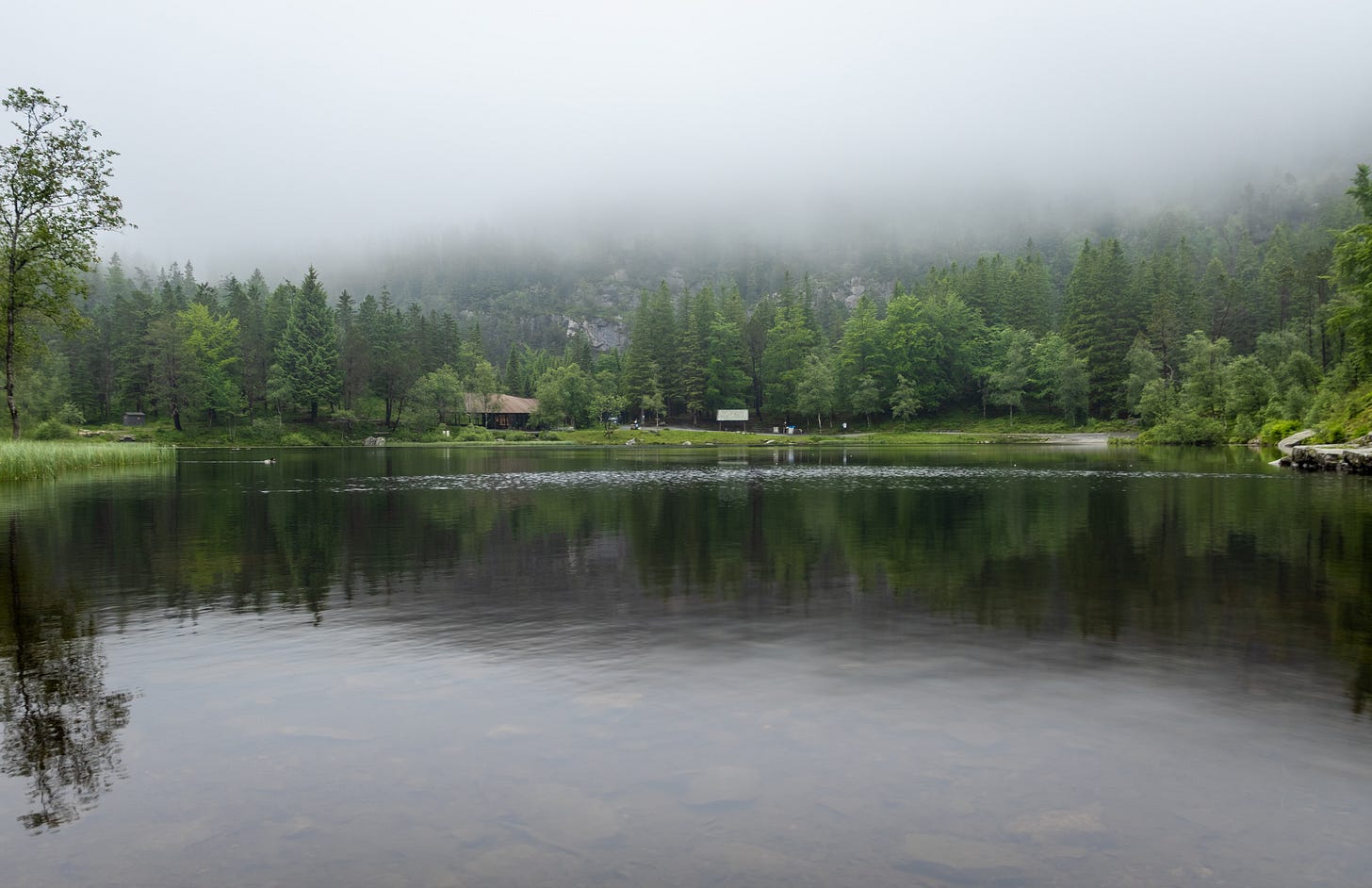
Further west still, back in the changeable spring sunshine and taking a catamaran beyond Bergen’s harbour and then north up the coast, Norway’s mythological country comes to life in full force. The great mountains reappear stretching from clear blue sea to clear blue sky. The inimitable Western Fjords. Ask me and they’re a wonder of the world. It was impossible to know where to look as the boat zipped down the Sognefjord; the great mountains walling in the sea, the tiny, colour-flecked villages, the ribbons of perfect road running alongside, or out at the water hoping for a glimpse of whales, dolphins or seals? In the end, neck aching from my head being on a swivel for three hours, at Balestrand, I embarked onto the Fjordlady and returned back to a more leisurely pace of travel. And the balance came back again.
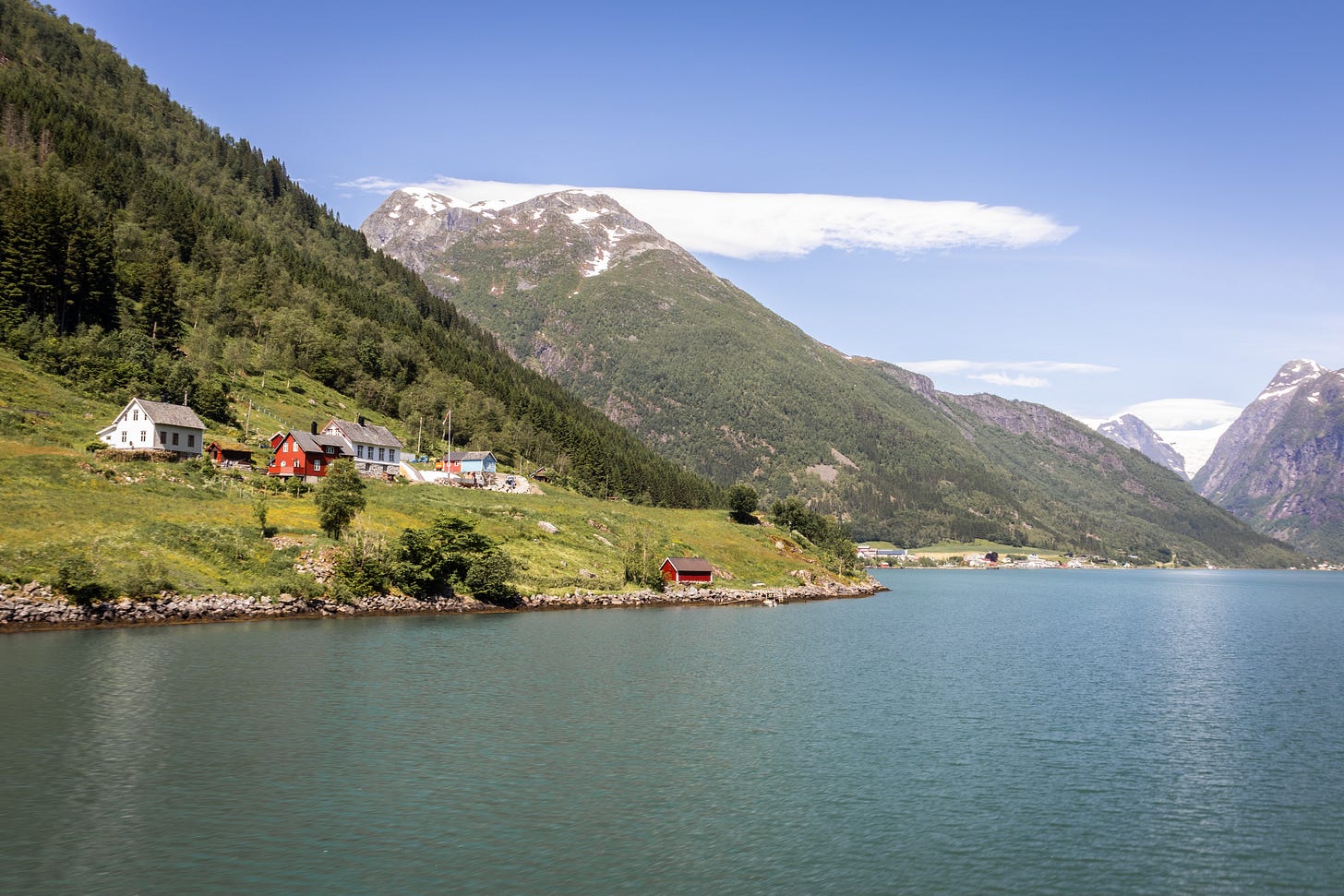
From racing through the wide, seemingly endless expanse of the Sognefjord in a stylish, modern ferry, to almost punting through the narrow strip of placid water that is the Fjærlandsfjord. It’s another journey into green, with more tear stream waterfalls and no less neck-straining beauty. It’s at the end of Fjærlandsfjord that Norway shows another hand. We’ve had mountains, forests, lakes, seas and fjords. Now, ice. A glacier. An arm of the continent’s largest, Bøyabreen silently, imperceptibly, heaved its way down amphitheatre of grey-black rock into a cloudy emerald moraine lake at its foot. And all I could do was stand, stare, and wonder how on Earth one country got this lucky.
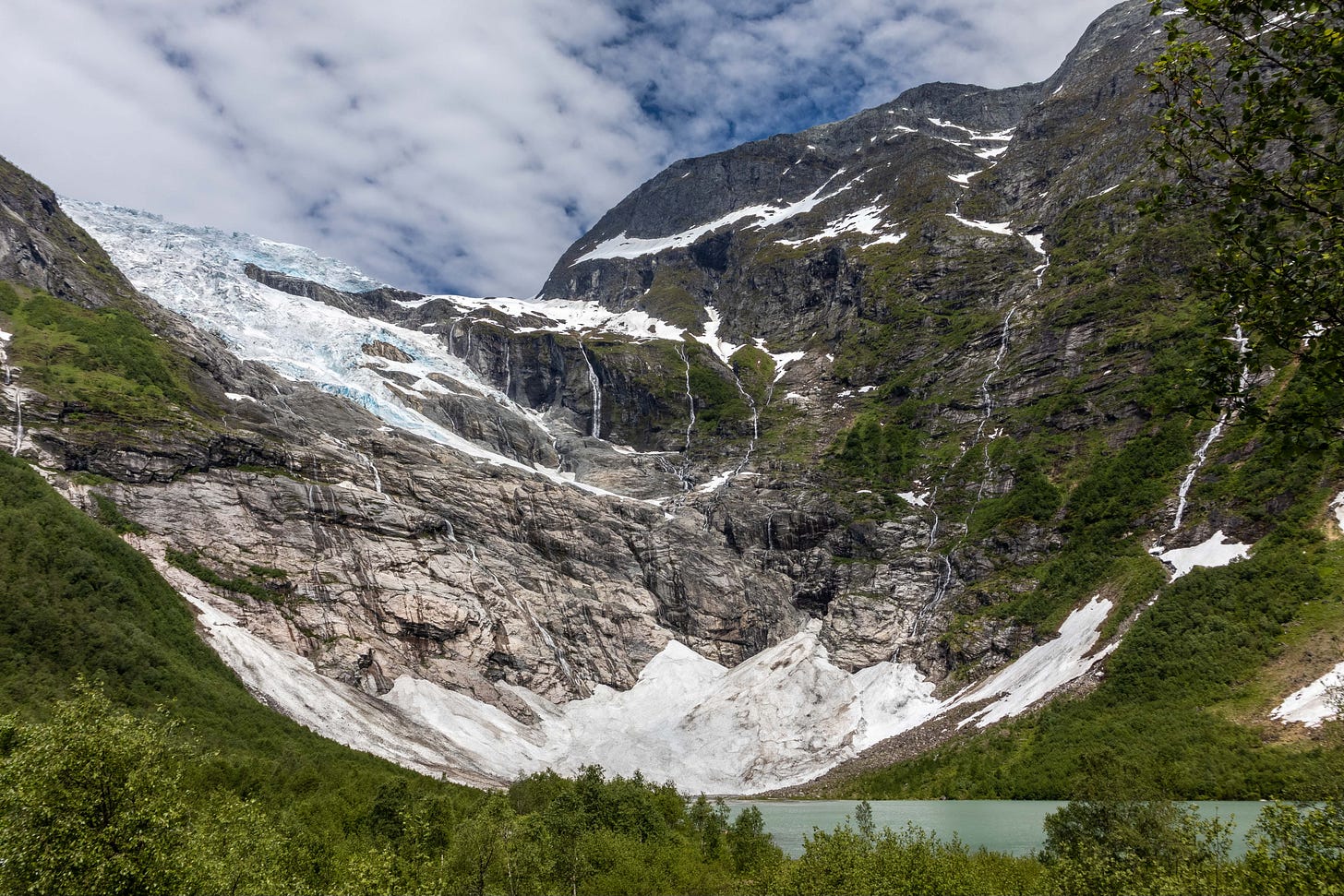
Oslo had left me worried for the ideals of Scandinavian travel, a part of the world I had felt so intensely to be a haven untouched by the depressing hand of the modern way of life and travel. But as my trip and the day of the spring equinox came to a close, and I found myself playing a game of football against backpackers and local kids, surrounded on all sides by a bonfire, the slopes of Ulriken and views down to the sea and, aptly, the SK Brann stadium, there are few places in the world I would rather have been, or have wanted to be since.
It really was true what they said, in Norway if you’re out on a trip, you can never be sour.



